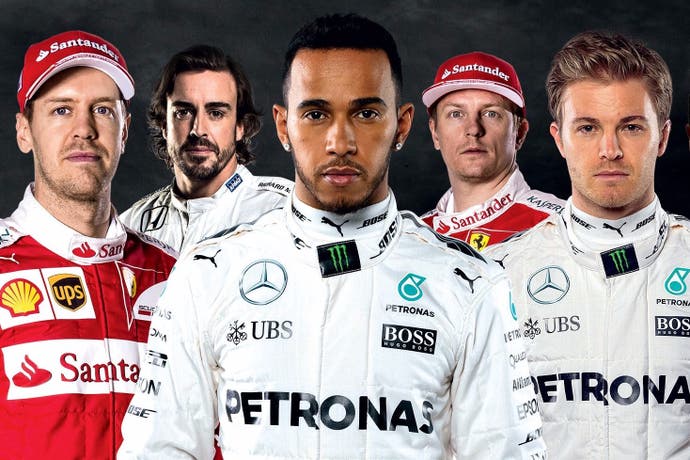Face-Off: F1 2016
Can Codemasters' second-gen F1 title improve visuals and boost frame-rate?
F1 2016 is Codemasters' second Formula 1 title to hit current generation consoles, and the extra year of development has led to improvements in a number of areas. The handling and physics model feels more authentic than last year's game, while on the graphical front the blurry presentation caused by the emphatic use of post-processing is resolved. F1 2016 still features a somewhat stylised appearance, but image quality is a definite step up from the previous game. Chromatic aberration is gone and depth of field is used more sparingly, leading to greater clarity and sharpness across environment and car detail. The lighting model also sees notable changes, with the circuits illuminated in a way that delivers more depth to various racing conditions while increasing contrast between light and dark areas.
On initial impressions, F1 2016 is clearly moving in the right direction, but once we get racing, it's clear that not every aspect of the game shows the same marked improvement. Codemasters targets 60fps for consoles, but performance once again fails to hit this target solidly on either platform with frame-rate drops and screen-tear compromising the experience to a degree. It's a similar situation to last year's game, which is a little disappointing given the welcome refinements in other areas.
In terms of the basic rendering set-up, PS4 delivers a native 1080p image while Xbox One comes in at around 1440x1080p - a reduction in horizontal resolution - with both using post-process anti-aliasing similar to SMAA on the PC version. The PS4 release has the edge here in providing a slightly sharper image, though there isn't much it during gameplay. Bright scenes can show up the resolution deficit on Xbox One, but outside of that the presentation is mostly even across both platforms.
With resolution set to 1080p along with SMAA and TAA enabled, the PC version provides a slightly more refined image with better coverage across sub-pixel detail due to the additional temporal AA component. However, using TAA results in some additional softness in motion over the PS4 version, though the differences here are actually fairly minimal in motion. Thankfully, you can choose to use SMAA alone if a sharper image is preferable.
Of course, with the PC version, it's possible to power past consoles and play at resolutions higher than 1080p, delivering a tangible leap in sharpness and clarity - but obviously, this also requires high-end GPU hardware to get the job done. Even so, there is a limit to how much more detail can be extracted from the artwork: texture quality and geometry complexity is a match across all three platforms, with the key differences coming down to the quality of the effects work.
For example, on consoles the PS4 version features slightly higher precision motion blur that appears a touch cleaner in motion, while extra depth is added to scenes via the use of ambient occlusion, an effect that is missing on Xbox One. It's worth pointing out that the differences in these areas are pretty small and don't immediately appear noticeable during gameplay, through the PS4 does offer up a more refined presentation overall if you fixate on the details.
In this respect, it's the PC version that has the capacity for providing a much larger upgrade, but as with many titles we've seen this generation, improvements add more subtle refinement as opposed to dramatic visual changes. Elements such as shadows and reflections are rendered at a higher resolution with fewer stair-step artefacts, while additional environment reflections are displayed across car bodywork. Streaming is also improved, with higher quality textures and shadows quicker to load up on PC, with lower res assets rarely on-screen for long.
Distant details across the track appear clearer too, with 16x anisotropic ensuring that mip-map transitions are rarely visible, whereas the console versions operate with variable levels of texture filtering. 4x anisotropic filtering looks to be deployed across the road surface. However, barriers and other trackside scenery sometimes appear to utilise lower quality filtering, resulting in the different mip-map levels becoming visible on occasion.
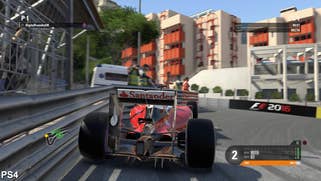


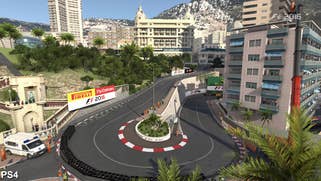
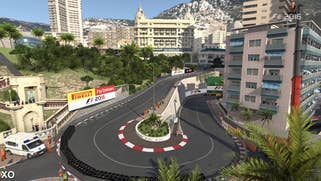


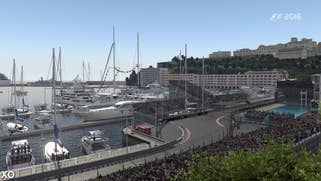


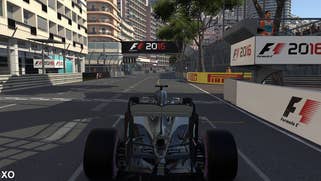


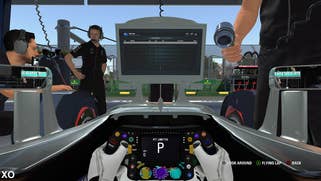
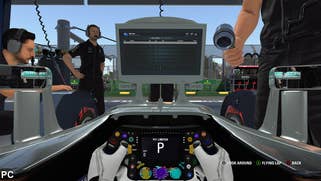
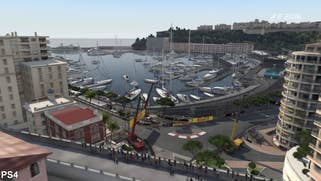


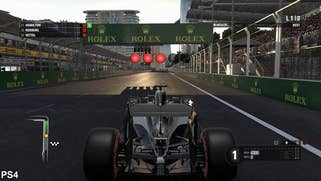
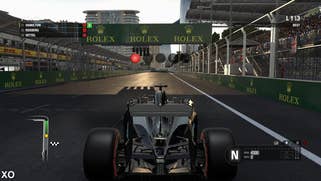
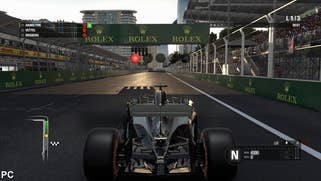
The differences here generally fall into line with F1 2015, with the biggest changes reserved for general engine improvements - such as upgraded lighting - or artistic alterations that deliver a sharper look to the overall presentation. As usual, the main draw on PC comes with the ability to play at a locked 60fps at a variety of different resolutions with a more consistent level of performance.
This is something that neither console really manages to achieve for extended periods during races, where frame-rate drops and tearing are a common sight. Of the two machines, the PS4 gets the closest to hitting 60fps, with performance usually however in the mid to low 50s, provides a highly playable experience when variances in frame-rates are pretty small. This is helped by the use of an adaptive v-sync which sends out an incomplete frame to the display if the engine cannot fully render it out within a 16.67ms time frame. This causes some pretty heavy tearing as the game rarely hits a solid 60fps, but the benefit here is that the feel of the controls stays fairly consistent outside of larger dips in performance.
The situation is less desirable on Xbox One, where complex city tracks - like Monaco and Azerbaijan - and stormy weather conditions hit the engine harder. Frame-rates can drop to 45fps at their worst, and as a result the experience just doesn't feel quite as solid as it should. There are moments where stutter is prominent and the controls take a noticeable hit due to the disconnect between controller inputs and the on-screen action.
Performance is marginally improved when playing on Xbox One S, but it's not a revelatory difference. The level of tearing remains the same, but in closely matched scenes, frame-rates get a small 1-3fps boost. It's not enough to bridge the gap with the PS4, and the large drops in performance are still present in demanding scenes. In fact, the performance level across both PS4 and Xbox One is pretty similar to last year's F1 title. This is a little disappointing, given how the engine has evolved in other areas. The bottom line is that if you're looking for a locked 60fps with little in the way of compromise, PC is the only way to go. At 1080p on high settings, a GTX 970 locks at 60fps, though ultra high requires meatier hardware.
All told, F1 2016 still marks a promising step forward for the franchise, despite unresolved console performance issues. Many aspects of the game have seen tangible improvements over last year's release, which is sure to please fans. It's great to see the handling and physics models further refined, though the variable frame-rate means that the gameplay isn't quite as polished as we would like.
The PS4 version comes the closest to hitting its performance target, and the experience here is improved as a result - so of the two console releases it's the one we'd recommend. That's not to say the Xbox One version is that far behind - it's still delivers an enjoyable experience - but performance just isn't quite as consistent as we'd like and this definitely has an impact on how well the game plays. But of course, to enjoy what Codemasters has to offer at its very best, PC is clearly the way to go.
